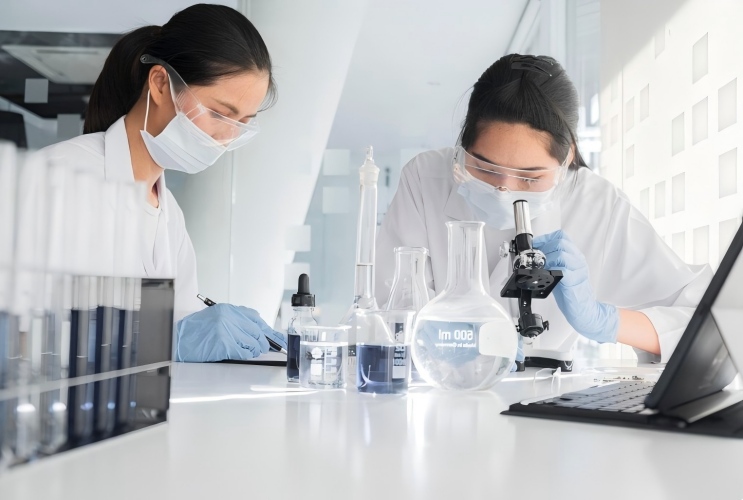Cannabidiphorol (CAS 55824-13-0) is a novel phytocannabinoid derivative with promising analgesic and neuroprotective properties. Its high lipophilicity and structural complexity present challenges in drug development but also offer opportunities for targeted therapeutic applications.
Name :
CannabidiphorolCAS No. :
55824-13-0MF :
C₂₃H₃₄O₂MW :
342.51Purity :
98%Appearance :
White to off-white crystalline solidStorage Condition :
Stable under ambient conditions but sensitive to light and oxidation; requires amber glass storageBasic Information
Chemical Name: 5-Heptyl-2-[(1R,6R)-3-methyl-6-(1-methylethenyl)-2-cyclohexen-1-yl]-1,3-benzenediol
CAS Number: 55824-13-0
Molecular Formula: C₂₃H₃₄O₂
Molecular Weight: 342.51 g/mol
Synonyms:
CBDP
21-Hydroxy-Δ⁹-tetrahydrocannabinol (21-OH-THC)
Phytocannabinoid derivative
Chemical Structure
Core Structure: A phenol derivative with a benzene ring substituted by a hydroxyl group (-OH) at the 1,3-positions and a cyclohexenyl side chain.
Stereochemistry: Contains two chiral centers (marked as Rand Sconfigurations) in the cyclohexene moiety .
Key Features:
Hydrophobicity: XLogP3 value of 7.6 indicates high lipophilicity, facilitating passive diffusion across cell membranes.
Hydrogen Bonding: Two hydrogen bond donors (phenolic -OH groups) and acceptors (oxygen atoms in the cyclohexene ring).
Physical and Chemical Properties
Appearance: White to off-white crystalline solid.
Melting Point: ~300°C (decomposition).
Solubility:
Poorly soluble in water (<1 mg/mL).
Moderately soluble in organic solvents (ethanol, methanol, DMSO).
Stability: Stable under ambient conditions but sensitive to light and oxidation; requires amber glass storage .
Key Applications



Investigated as a candidate for treating chronic pain, epilepsy, and metabolic disorders.
Explored in combination therapies with other cannabinoids to enhance efficacy.
Safety and Handling
Toxicity:
Acute toxicity data unavailable; likely low toxicity given structural similarity to CBD.
Avoid prolonged exposure to high concentrations.
Regulatory Status:
Not classified as a controlled substance in most jurisdictions but may require regulatory review for human use.
Synthesis and Production
Synthesis Routes:
Hydroxylation of CBD: Enzymatic or chemical modification of cannabidiol to introduce the 21-OH group.
Biocatalytic Methods: Use of microbial enzymes for selective hydroxylation.
Purification: Recrystallization from ethanol or column chromatography.
FAQ
Q: What is CBDP?
A: Cannabidiphorol (CBDP) is a naturally occurring phytocannabinoid found in the Cannabis sativa plant. It is structurally similar to cannabidiol (CBD) but features a 7-carbon alkyl side chain (heptyl group) instead of CBD’s 5-carbon chain. Discovered in 2019 by Italian researchers, CBDP was initially thought to be synthetic but later confirmed as a natural compound in hemp.
Q: How is CBDP Produced?
A: Natural Occurrence: Found in trace amounts in hemp, making direct extraction impractical for commercial use.
Synthetic Production: Primarily synthesized via isomerization of CBD isolate (crystalline CBD), classifying it as a semi-synthetic cannabinoid.
Q: How does CBDP compare to other minor cannabinoids like CBG or CBN in terms of therapeutic potential?
A: CBDP shows promise in pain and cancer therapy due to its structural uniqueness but lacks robust clinical data.
CBG is a versatile "mother cannabinoid" with proven neuroprotection and antibacterial effects.
CBN remains the gold standard for sleep and sedation, backed by decades of research.
For targeted therapies, CBG and CBN are more established, while CBDP requires further exploration. Combining these cannabinoids may maximize synergistic benefits, but always consult healthcare providers for personalized use.
Leave A Message
Scan to Wechat/Whatsapp :

